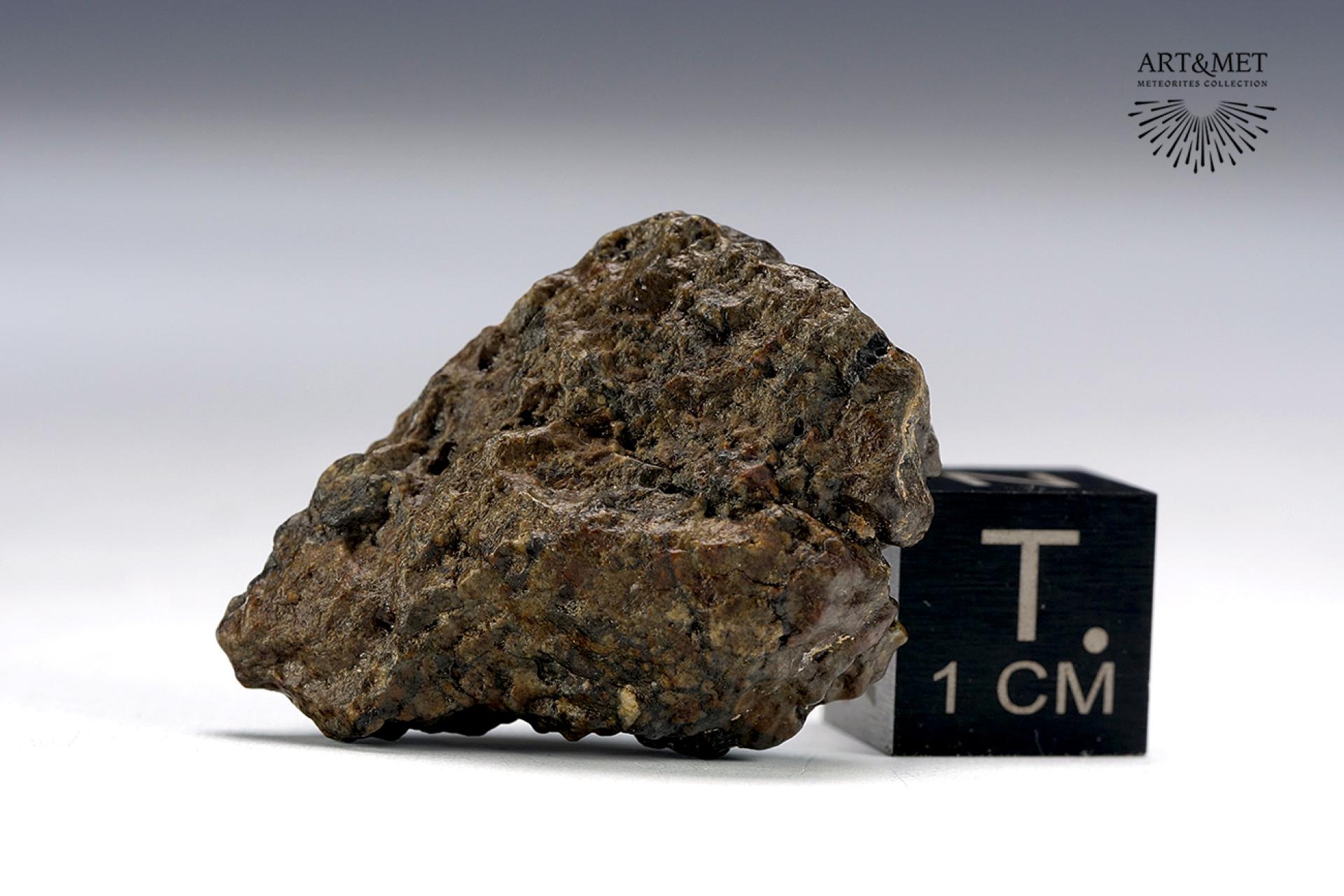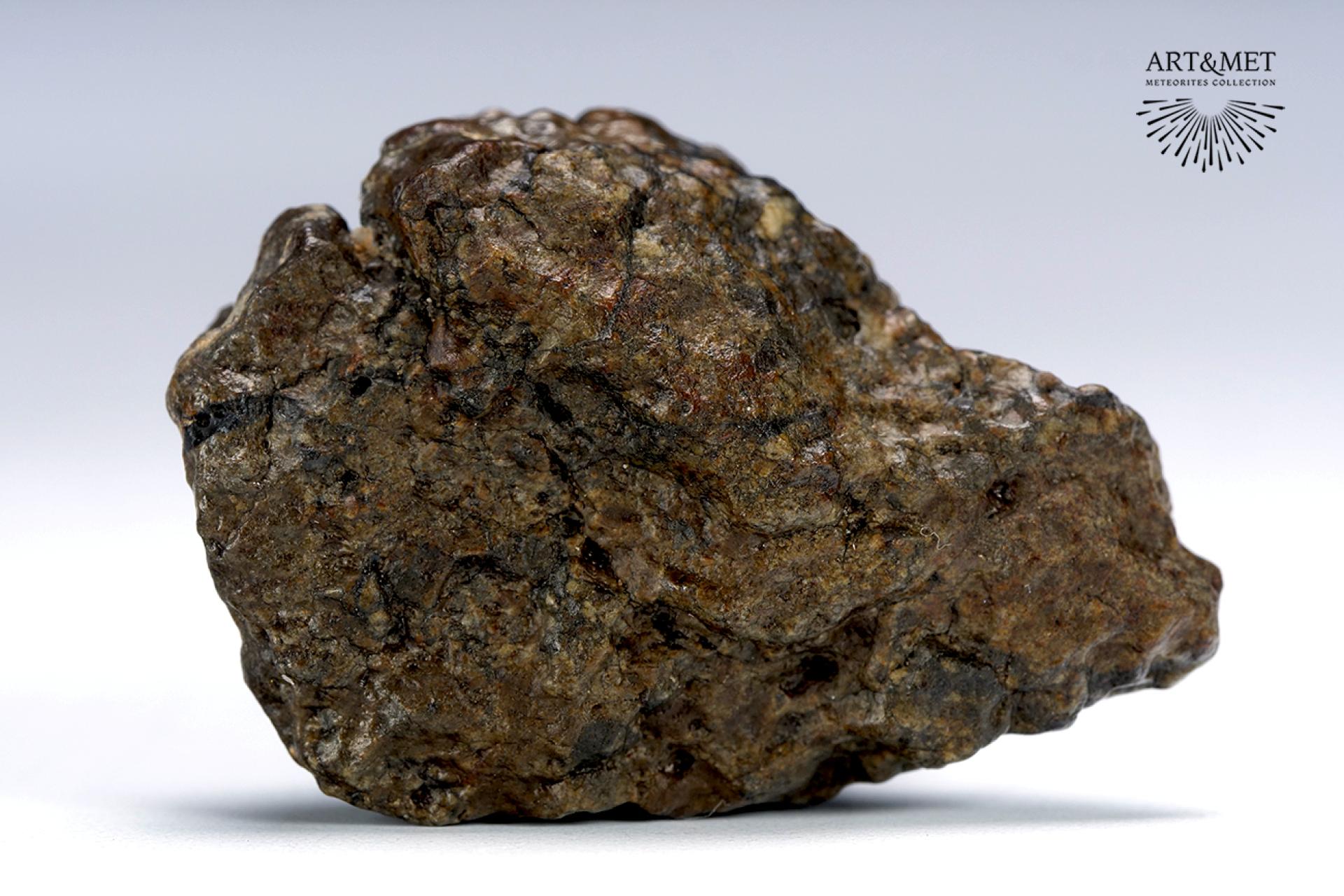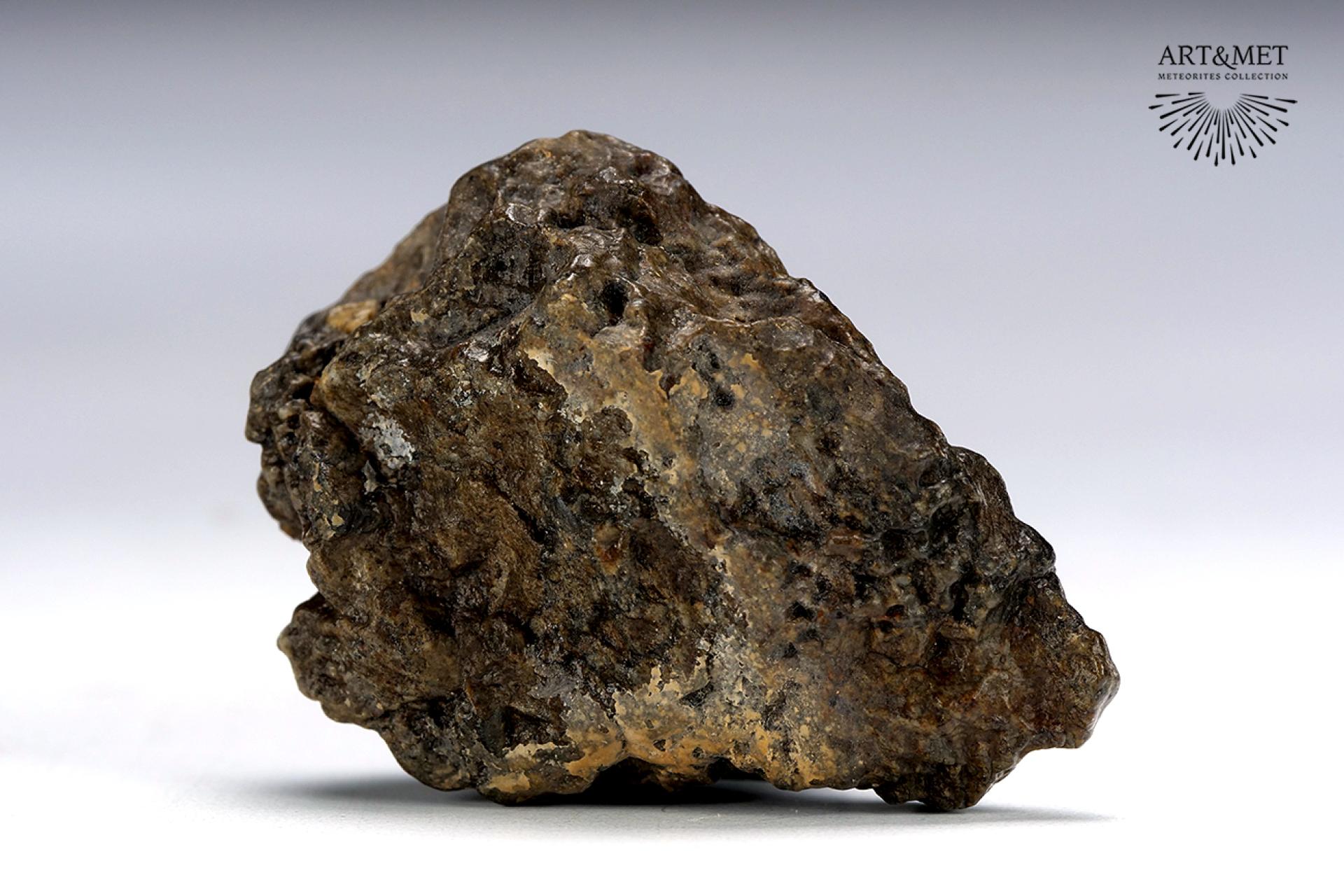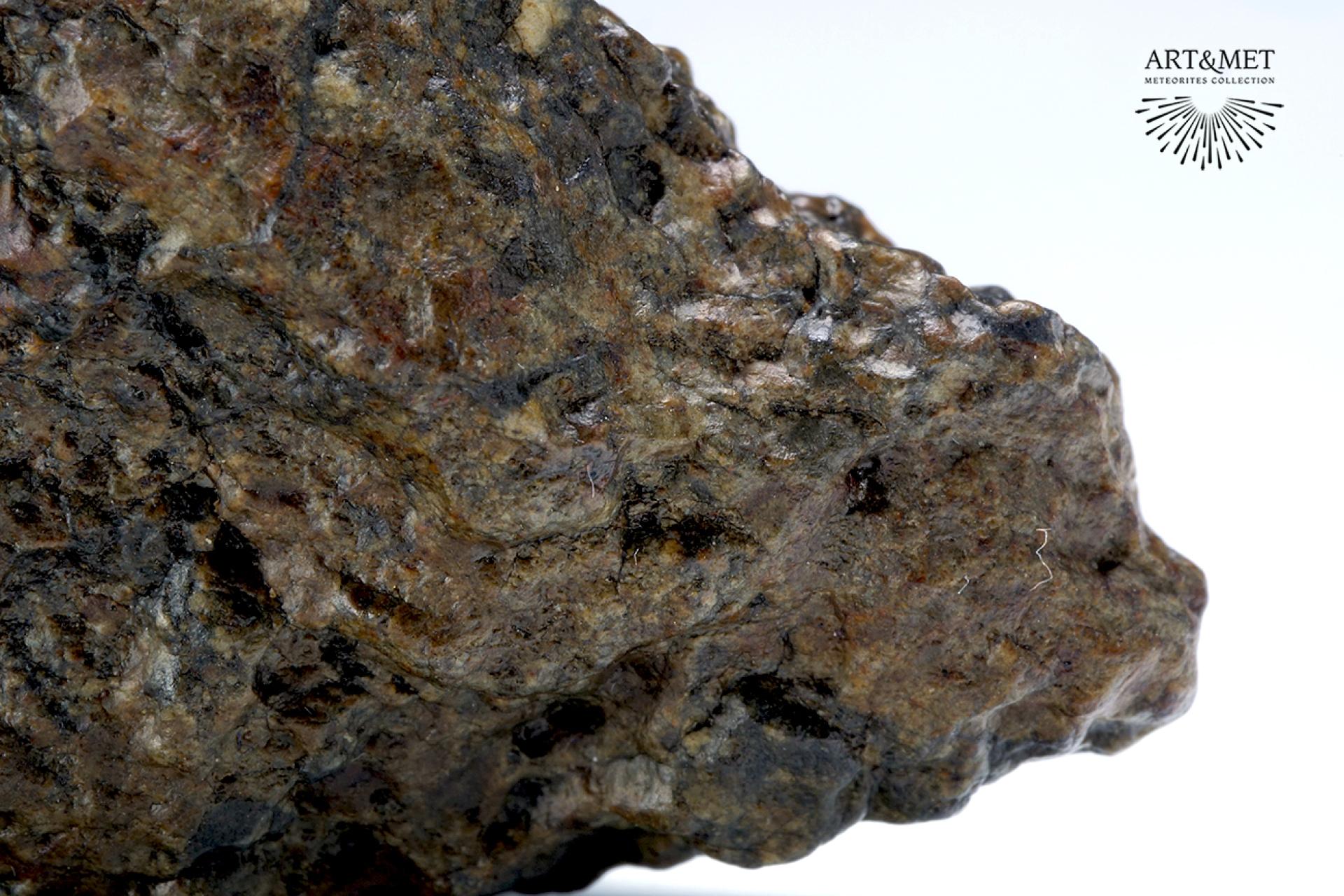
Dho 1980 - 5.8g
Name: Dhofar 1980
Classification: lunar (feldspathic breccia)
Country: Oman
Observed fall: No
Year found: 2012
Mass / (TKW): 23,5g
Dimension: ~ 28x20x10mm
Weight: 5,8g
PRICE: $
Physical characteristics: Six stones with masses of 5.8, 5.5, 4.9, 3.2, 3.2, and 0.9 g and ~2.5 to 1.5 cm in maximum size. Two stones contain significant dark, speckled fusion crust that cover most of one face of the respective stones. Shapes are angular to sub-rounded and colors range from grey, reddish, and tan with dark, sub-mm veins that connect melt pods. A 1.2-g slice of the 5.5-g stone shows a well consolidated rock with a brecciated texture of angular clasts that exhibit orange staining, and a few that are light colored. These clasts are set in a very fine-grained, gray groundmass that accounts for ~20 vol% of the sample.
Petrography: (A. Wittmann, WUSL) A 23.3 by 15.9 mm petrographic thin section exhibits a well consolidated, crystalline, melt rock that contains abundant angular, dark, apahnitic clasts, and light, angular to sub-rounded clasts that display rusty, orange staining. The complex, clast-rich, intergranular melt rock has a groundmass of 10 μm feldspar, olivine, and pyroxene, plus minor merrillite, FeNi metal, and troilite grains. Monomineralic clasts include <1 mm plagioclase, olivine, pyroxene, and spherical FeNi metal grains that are variably deformed and partly assimilated. Polymineralic clasts include dark, microcrystalline, intergranular lithic clasts that contain up to 100 μm mineral clasts of plagioclase; medium to fine-grained poikilitic lithic clasts with noritic and anorthositic mineralogies; medium-grained anorthositic clasts with granulitic textures; medium-grained anorthositic cumulate clasts of >0.3 mm feldspar with interstitial, poikilitic pyroxene and FeNi metal particles; and medium to fine-grained sub-ophitic domains of feldspar laths, zoned pigeonite, rhyolitic mesostasis, armalcolite, troilite, and FeNi metal intergrown with schreibersite. Silicate minerals frequently show reduced birefringence and intense brittle deformation. Many olivine and magnesian pyroxene clasts are extensively altered to phyllosilicates, and plagioclase shows orange staining in places. Other common alteration phases are SrSO4, CaSO4, CaCO3, and Fe-oxides that fill fractures; Fe-oxides also replace metal and troilite.












